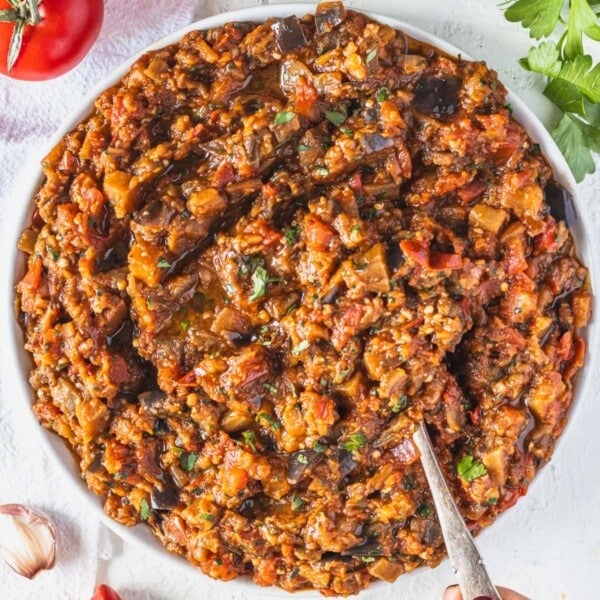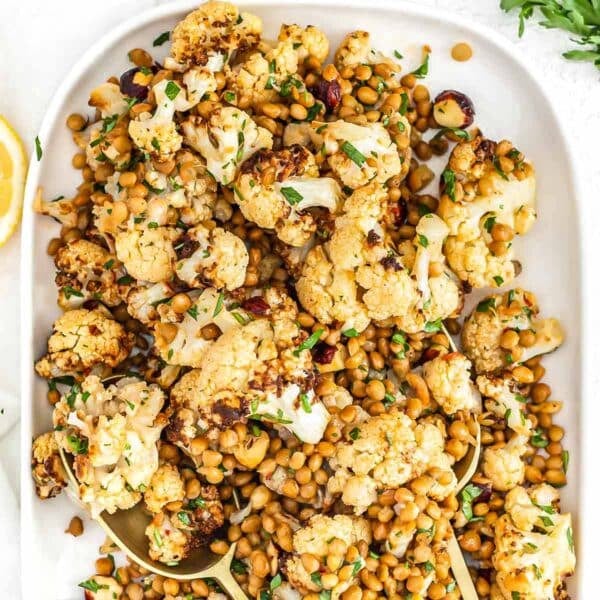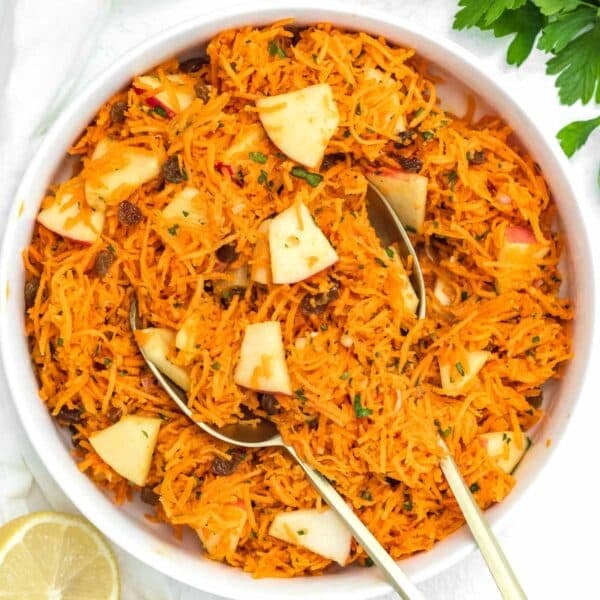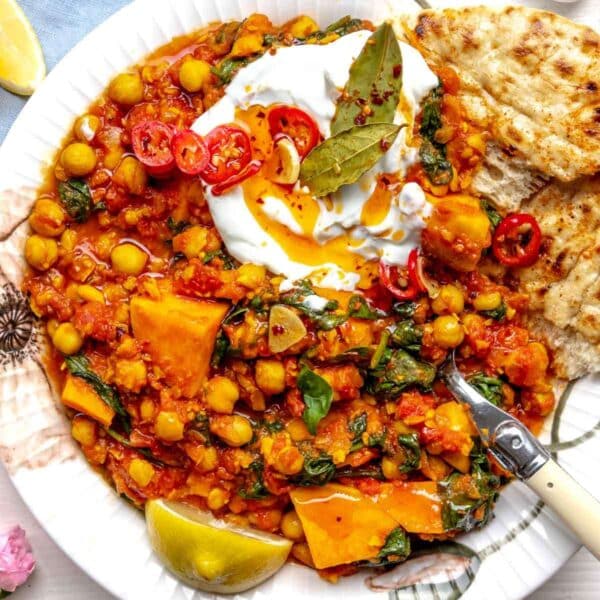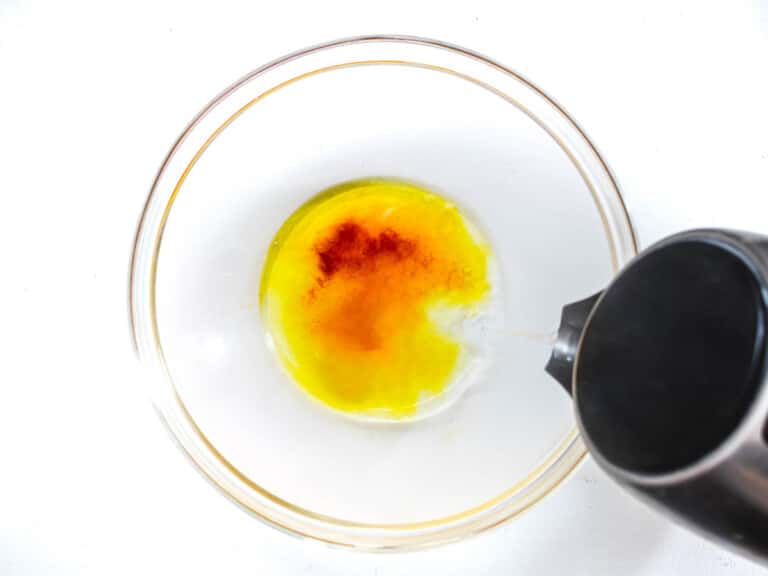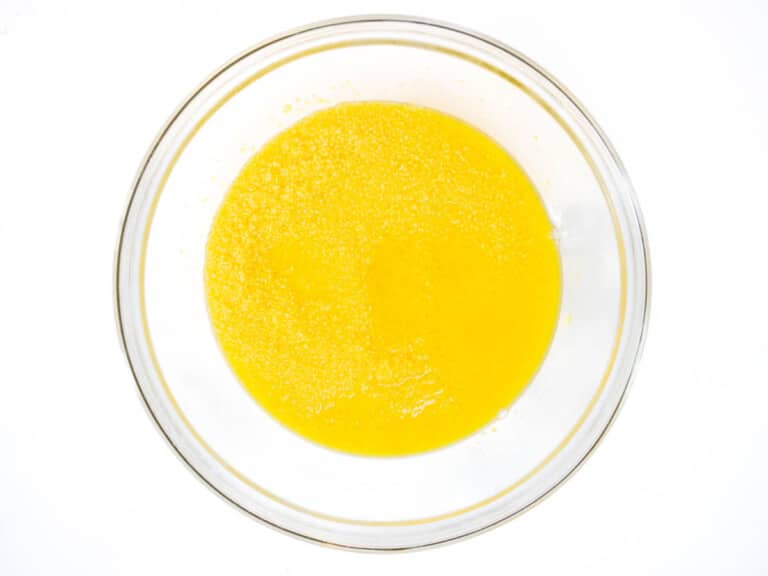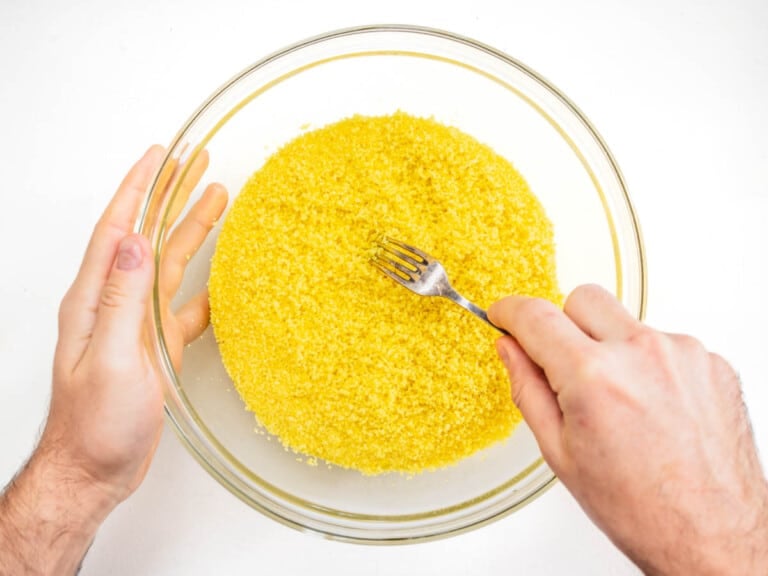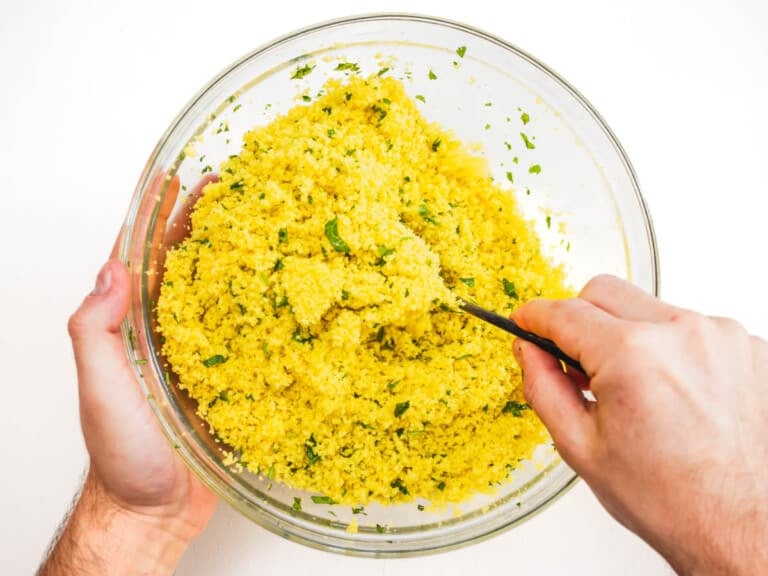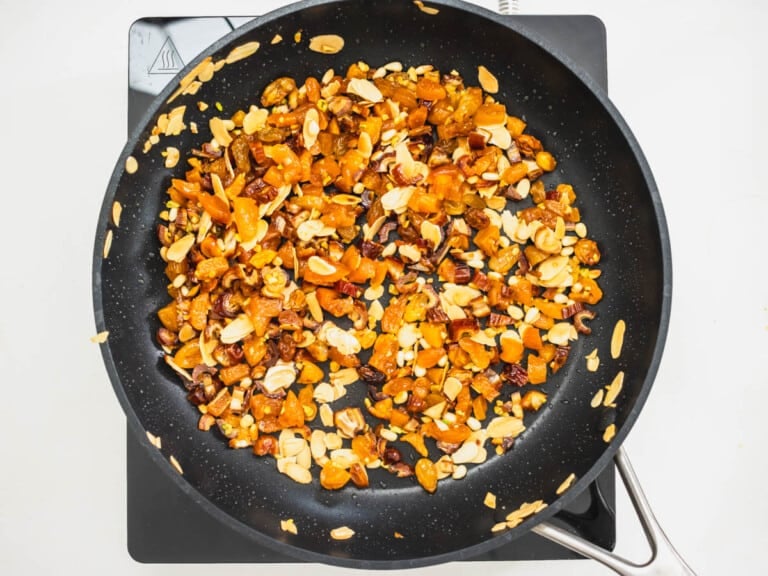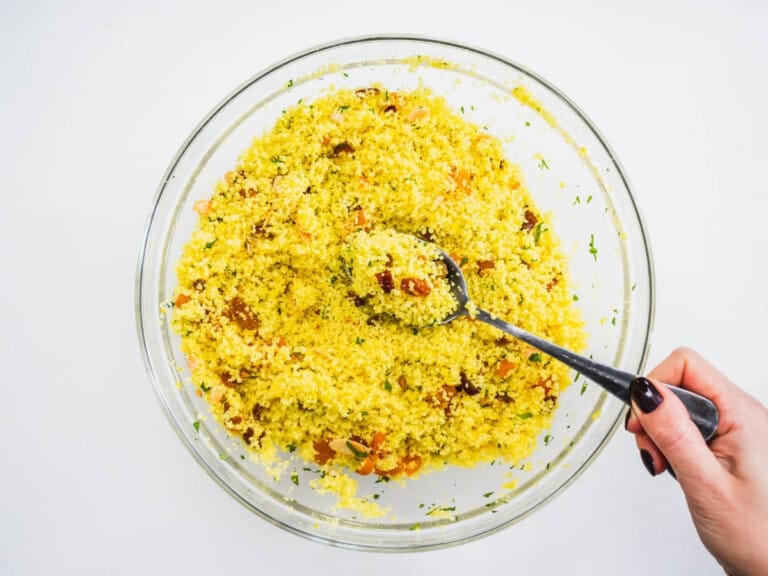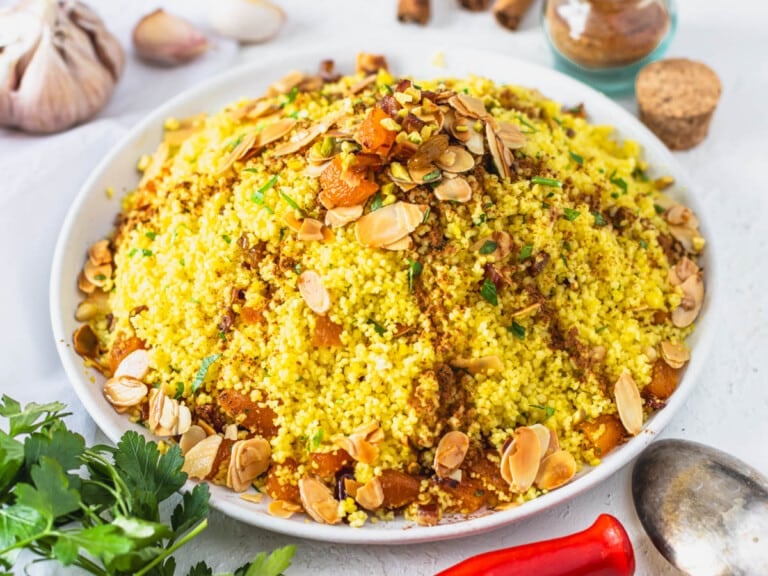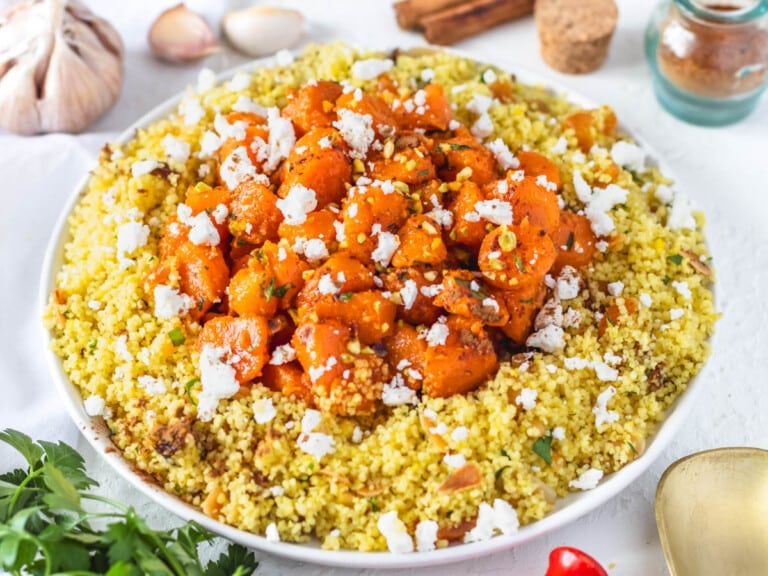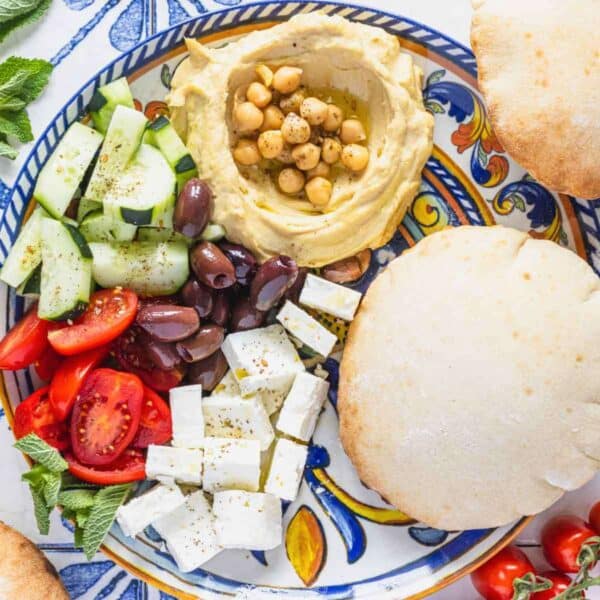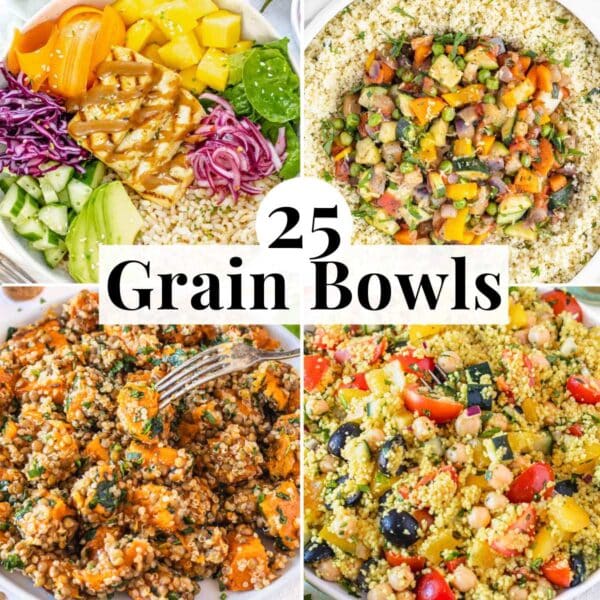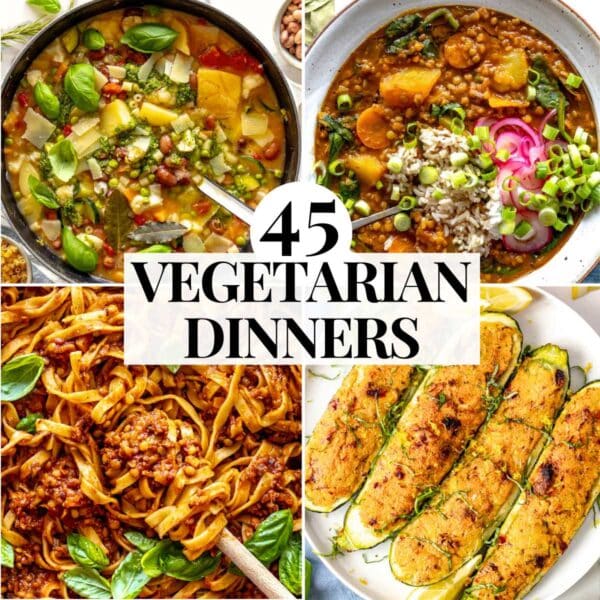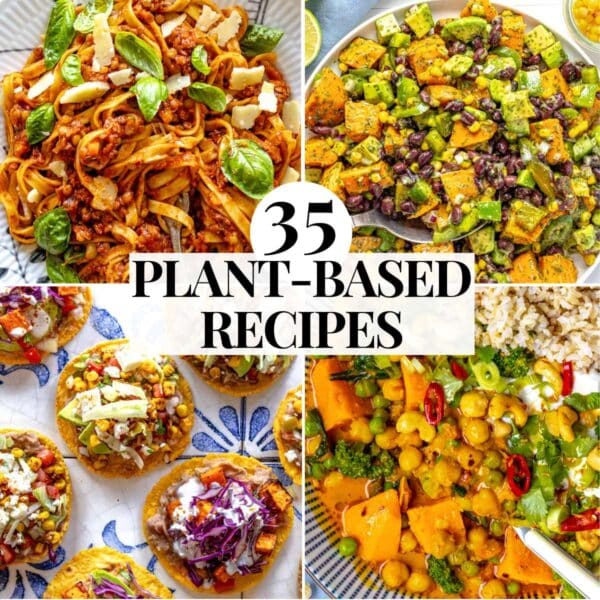Moroccan couscous is a flavor-packed centerpiece that combines delicious sweet and savory flavors embedded in Moroccan traditions.
I highly recommend serving it with tagine, zaalouk, or chickpea stew.
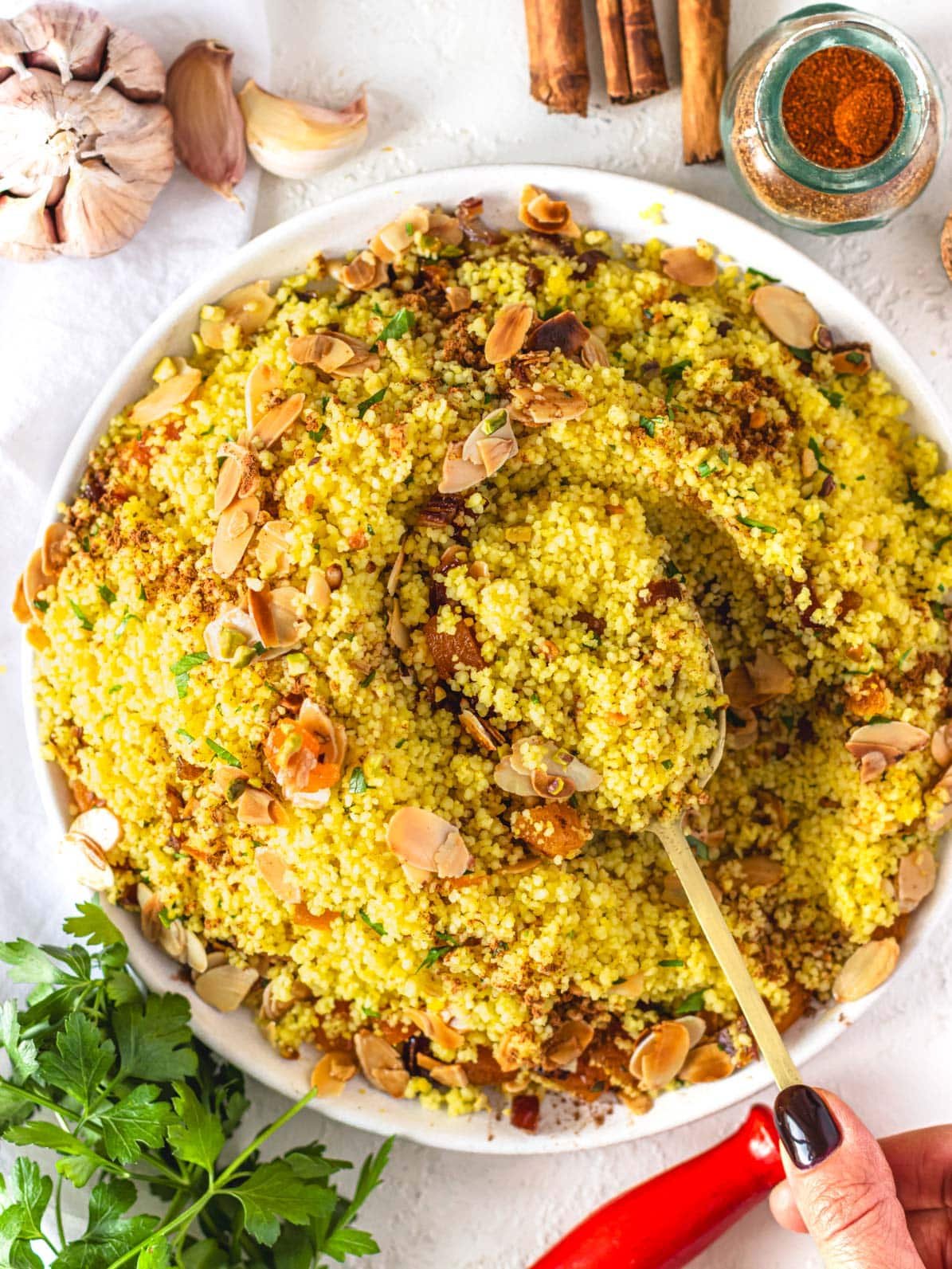
Dietary Note: this recipe is suitable for a vegetarian and vegan diet. Not suitable for a gluten-free diet.
Couscous is a staple dish in North African countries, from Morocco to Lybia.
We make it a centerpiece of our table and serve it wish other Moroccan dishes such as Moroccan carrot salad, chermoula, tagine, and hummus.
Couscous made with small steamed granules of semolina, the same ingredient used to make dry Italian pasta.
For convenience, most Western supermarkets sell pre-cooked and dried Moroccan couscous, which means that making it at home is a matter of minutes. It’s a great alternative to pasta or rice.
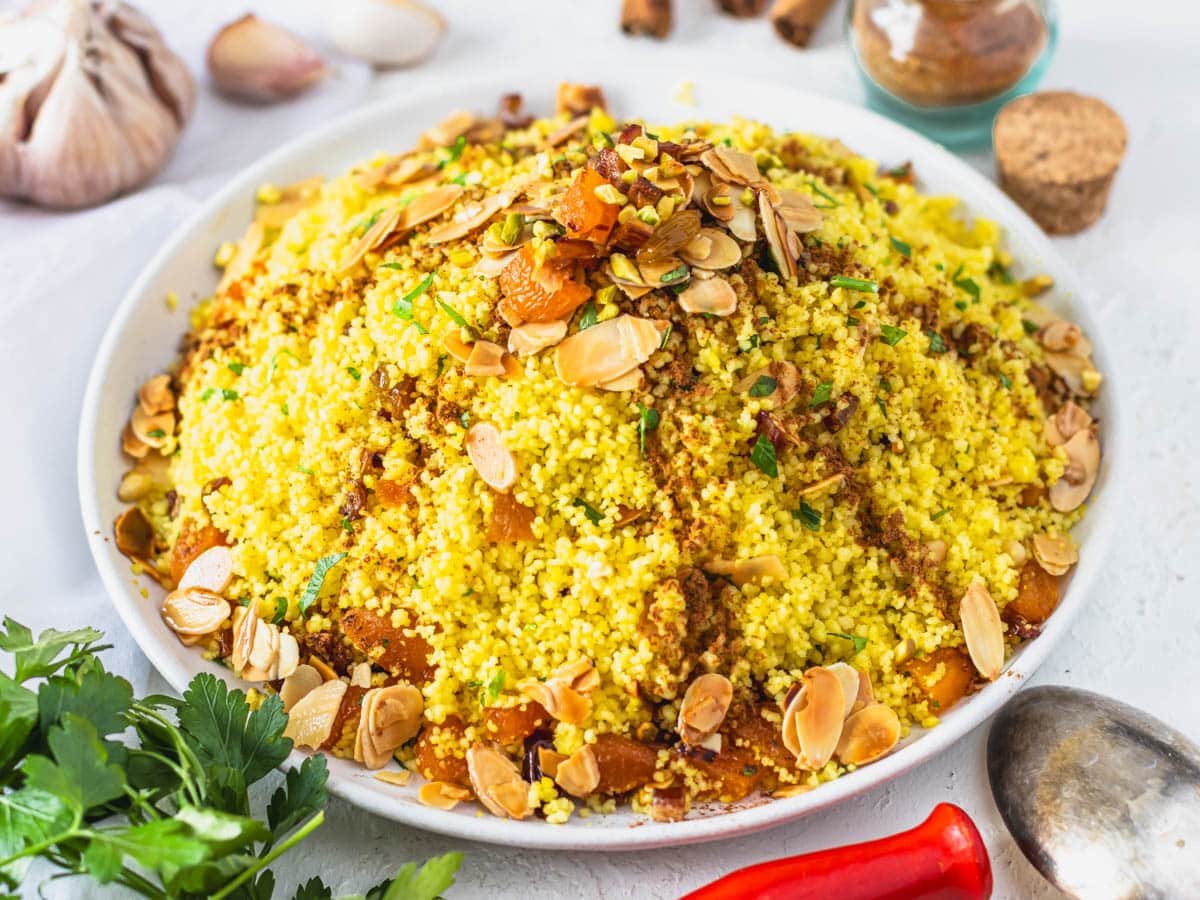
In Morocco they eat couscous like we would eat bread or pasta. It has a neutral flavor that lends itself well to various toppings and sauces.
Here, we’ll show you how to make a simple and authentic Moroccan couscous recipe that combines sweet, sour, savory, and aromatic flavors from spices, dried fruits, and nuts.
You can serve this as an appetizer, side dish, and even as a main. It’s excellent for meal prep as it keeps well for days.
Ingredients & Substitutions
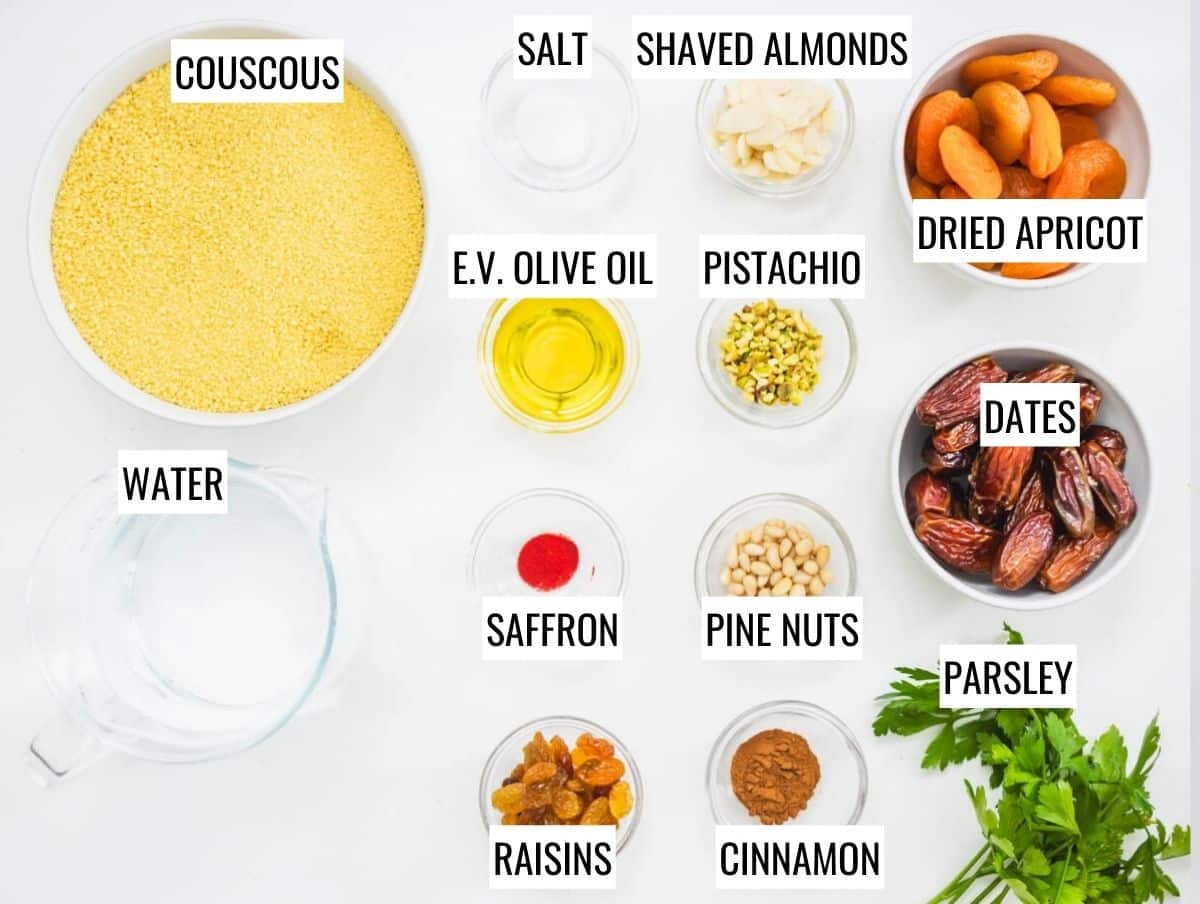
Quantities are in the recipe box at the bottom of the page.
Couscous
By couscous we mean Moroccan couscous, not Israeli couscous.
Moroccan couscous looks like small granules of sand, whereas Israeli couscous looks more like tiny pearls of pasta.
You’ll find Moroccan couscous in most if not all, western supermarkets.
They sell it pre-steamed and dried, meaning you only have to rehydrate it with hot water or vegetable broth, and it’s ready to eat.
Dried Fruits
We recommend: Dates, Dried apricots, and Raisins.
Nuts
You can pick and mix your favorites.
We recommend: Pistachios: best if not salted. Almonds: best if slivered or shaved and pinenuts.
Spices
We recommend:
- Cinnamon
- Cumin: ground.
- Saffron or turmeric: optional, to color the couscous with a vibrant yellow hue.
- Salt: best if sea salt or kosher salt.
Fresh herbs and lemon juice
Use fresh flat-leaf or Italian parsley.
Substitute fresh coriander (cilantro) or fresh mint for parsley.
Optionally you can squeeze some fresh lemon juice on the couscous before eating.
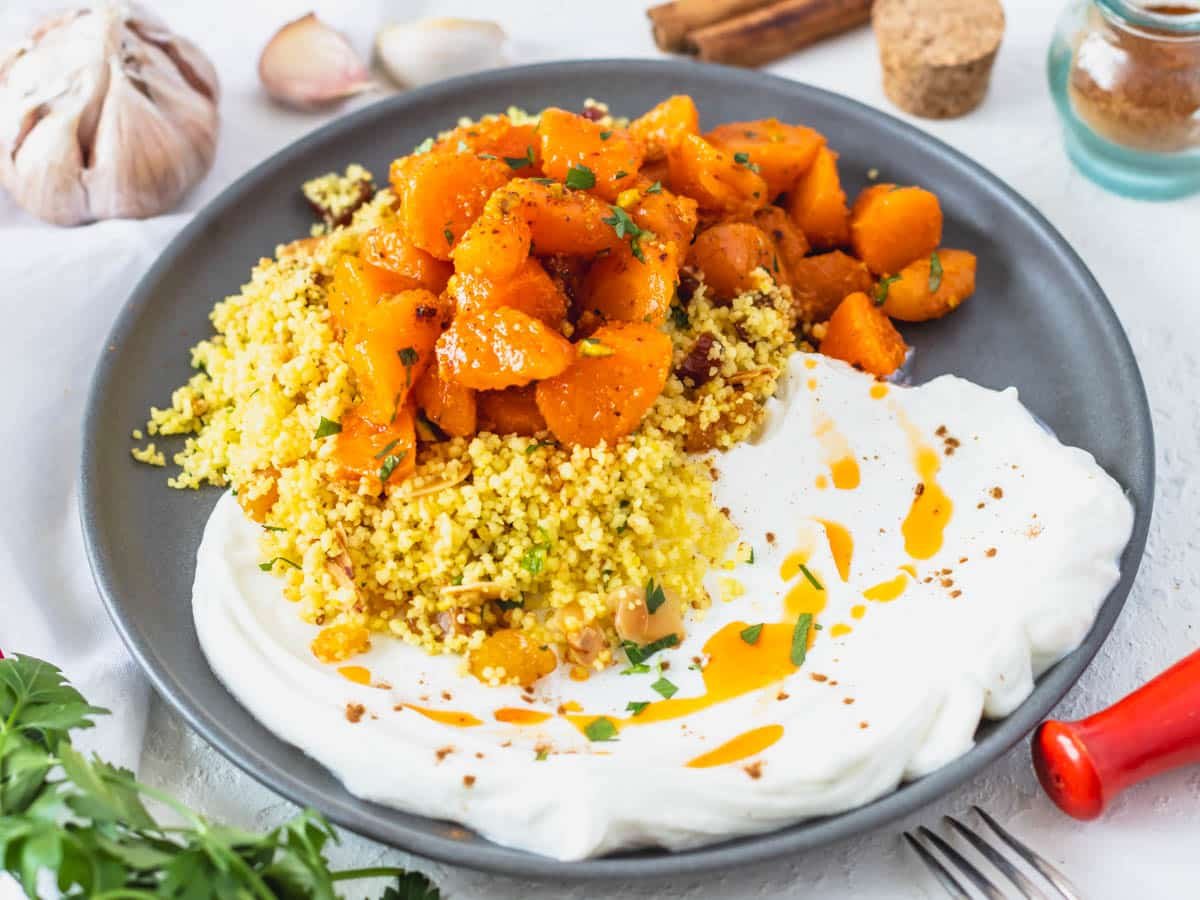
How to make Moroccan couscous
US cups + grams measurements in the recipe box at the bottom of the page.
Rehydrate the couscous
Boil the water or vegetable broth in a kettle or a small pot on the stove.
Add the saffron powder (or turmeric powder) and salt to a large mixing bowl and dissolve them with 2 tablespoons of boiling water.
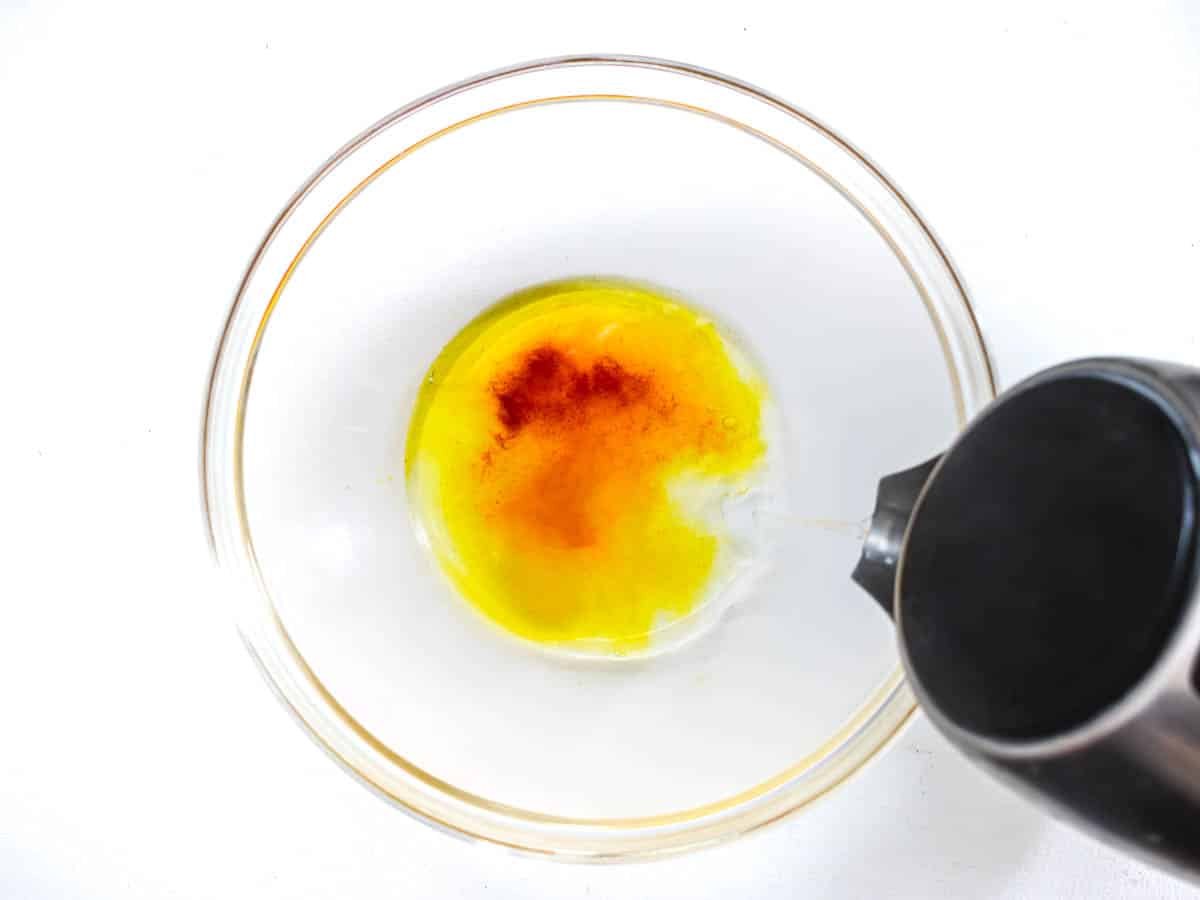
Add the couscous and pour in the remaining boiling water/broth.
Stir with a fork and make sure to submerge the couscous in water. Set aside for 10 minutes.
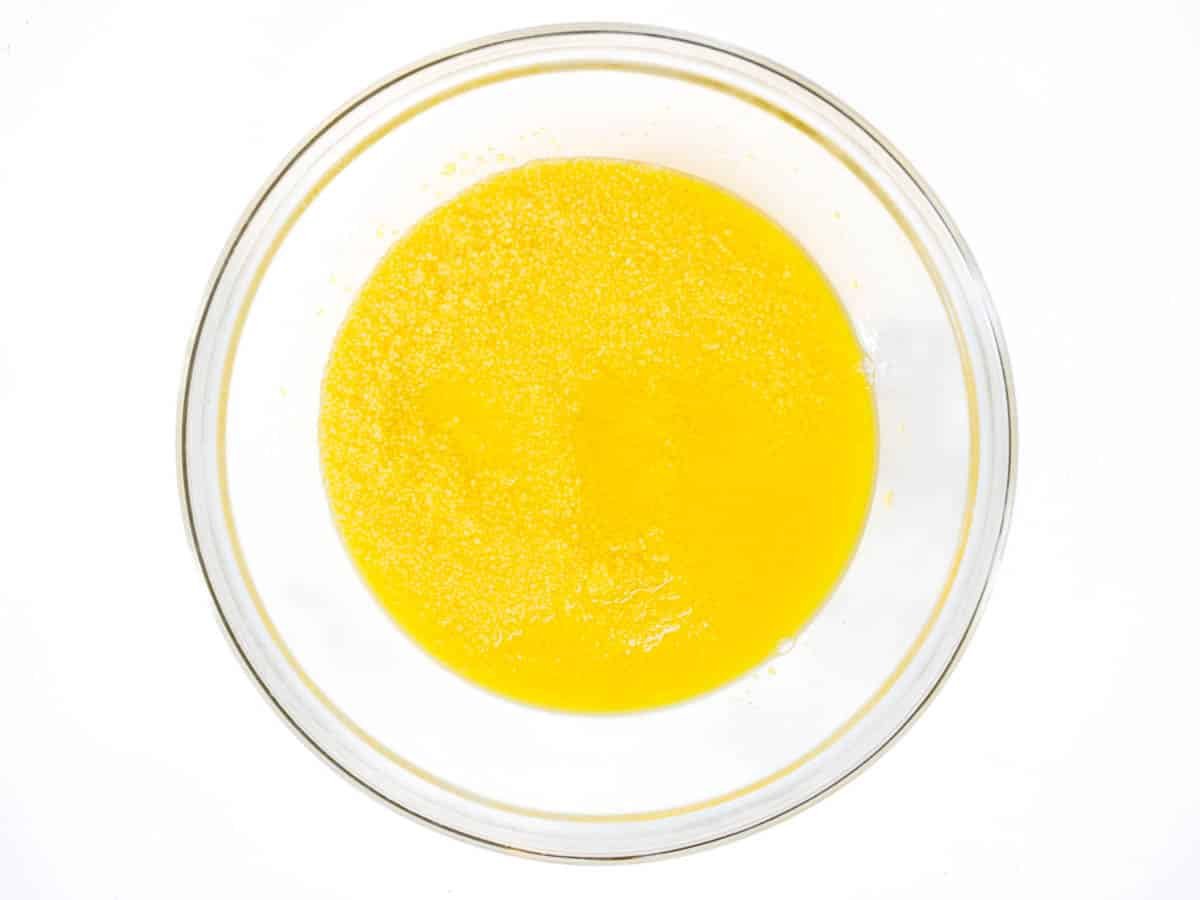
Now, rake the couscous with a fork to separate its grains and fluff it up.
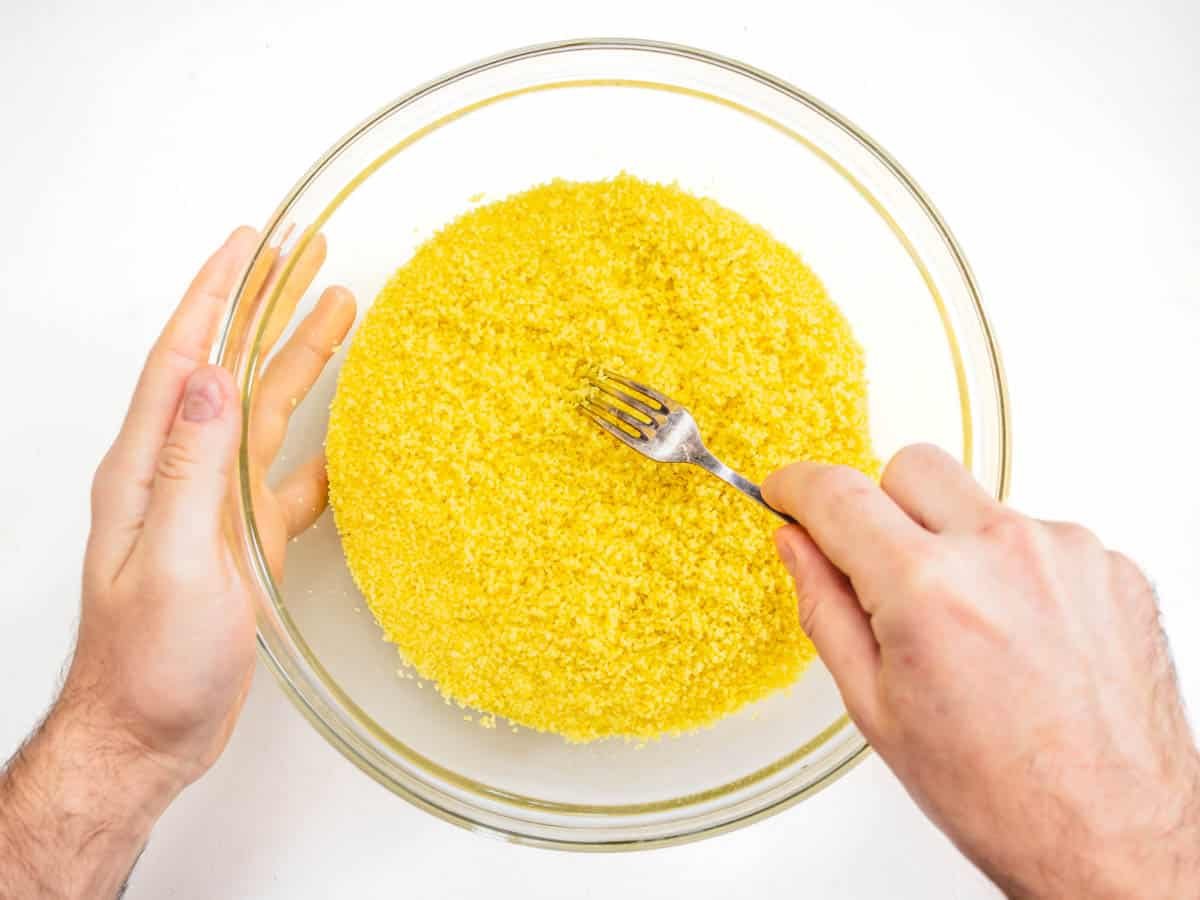
Add fresh parsley and extra virgin olive oil and toss until well combined, then taste and adjust for salt.
Tip: traditionally, couscous is tossed by hand so you can easily feel and separate the grains. However, you can also do it with a spoon.
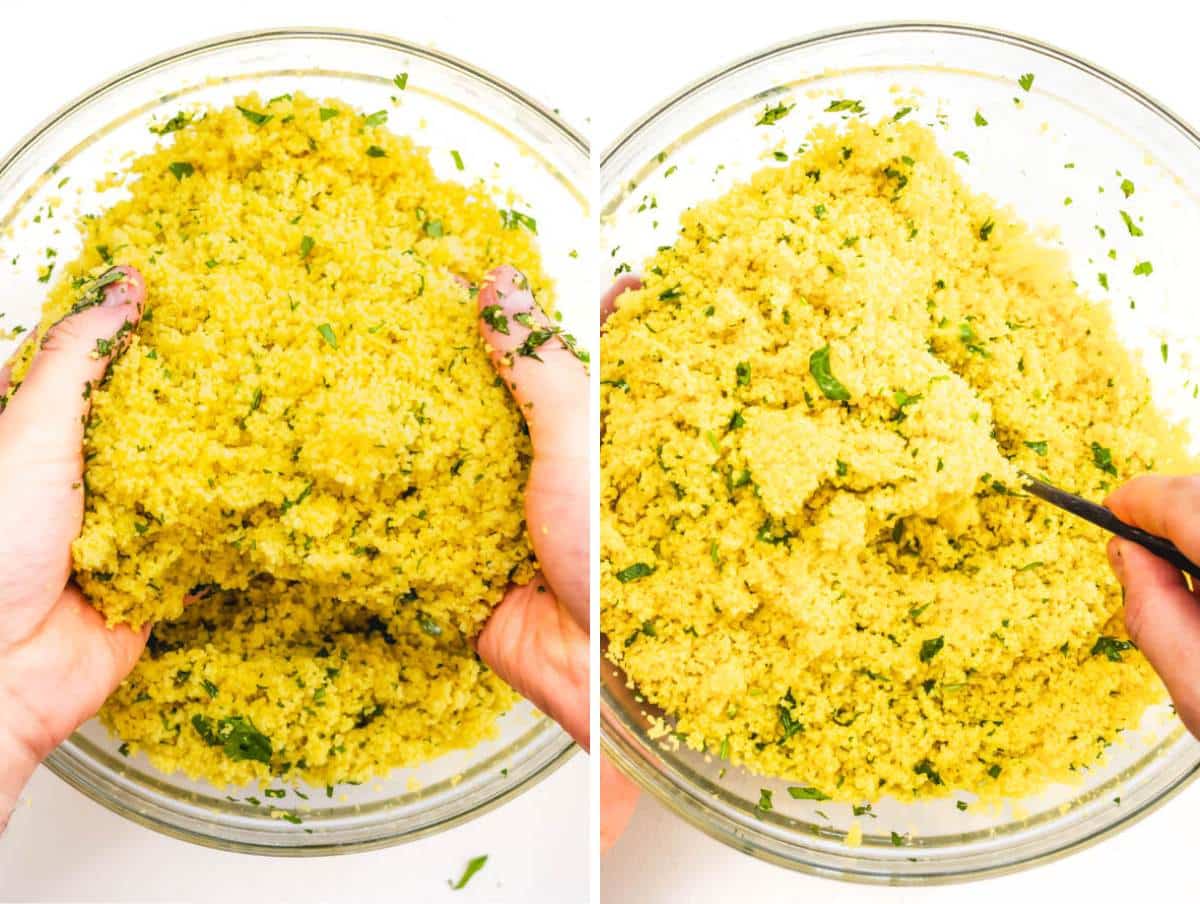
Prepare the nuts and dried fruits.
While the couscous rehydrates, chop the dates, dried apricots, and shelled pistachios into small pieces
Tip: remove the pit from the dates if there’s any.

Heat the olive oil in a skillet. Add the slivered almonds and toast them on medium-low heat for 2 minutes.
Add chopped pistachios, pinenuts, apricots, dates, cumin, and cinnamon, and toast for 2 more minutes.
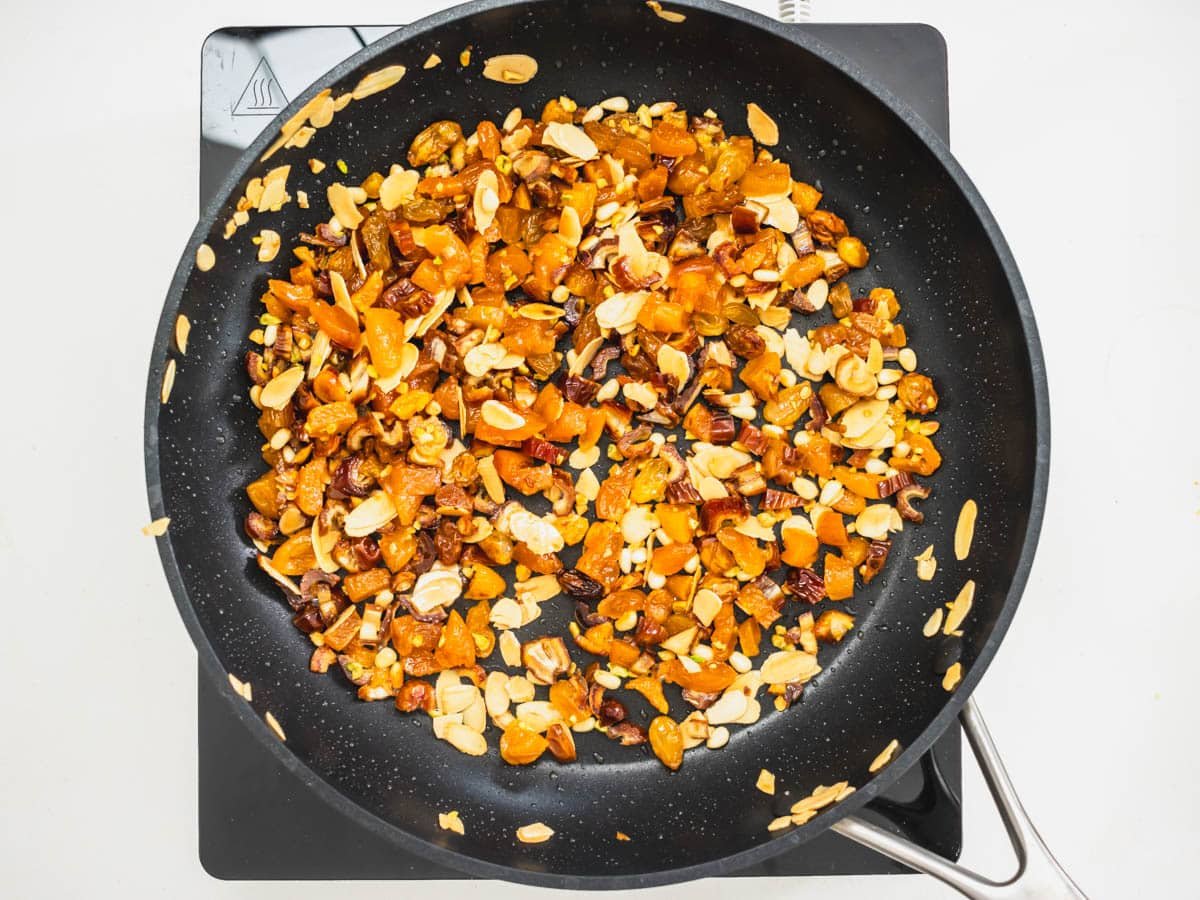
Set three tablespoons of the mix aside. Add the rest to the bowl with the couscous and toss until well combined.
Tip: reheat the couscous in a microwave for 1 minute if it gets cold.
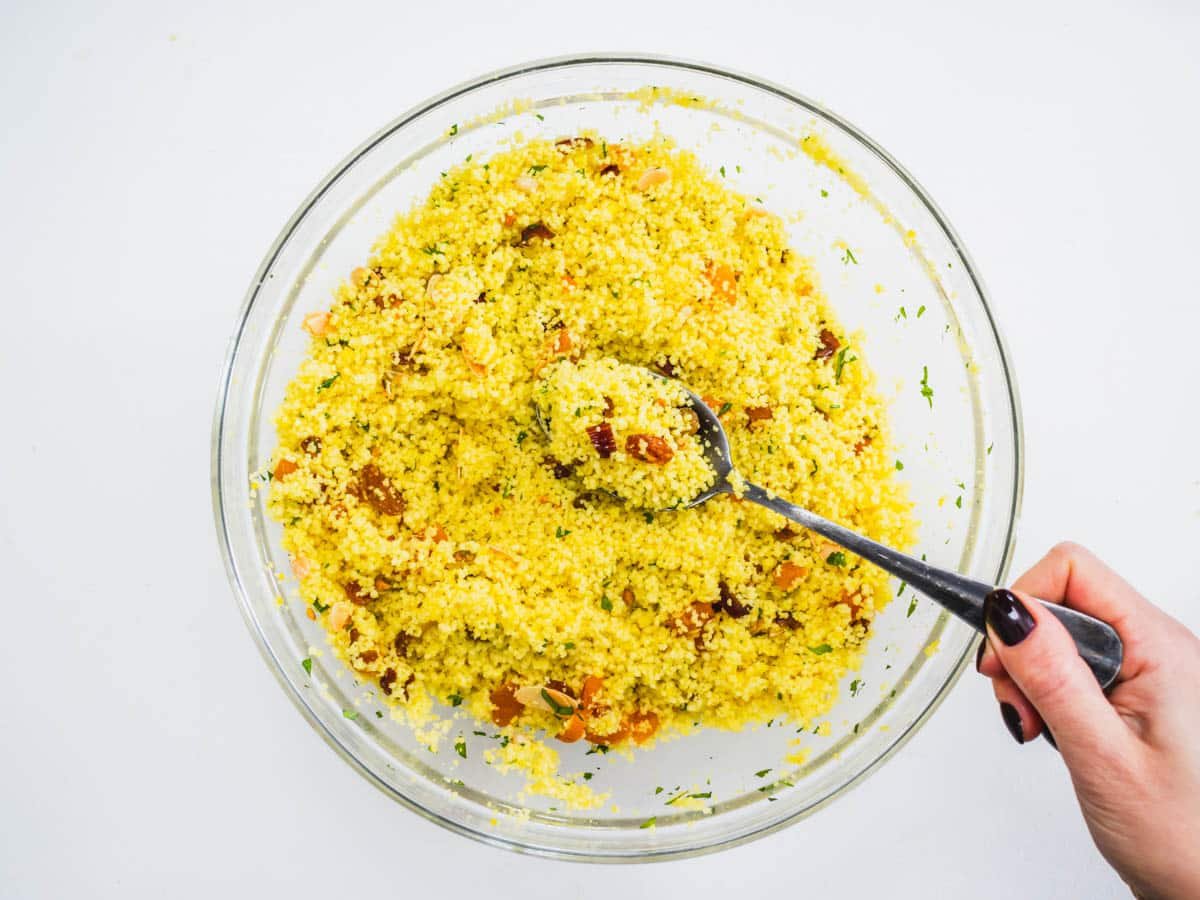
Serving suggestions
Pile the Moroccan couscous on a plate and sprinkle with a few pinches of cinnamon. You can do this in stripes, as shown in the picture below.
Top with the reserved fruits and nuts mix and serve in the center of the table.
Tip: traditionally, powdered sugar is added on top, alternating a stripe of cinnamon with one of powdered sugar. We don’t do this, as we think the dish is sweet enough from the dried fruit.

Moroccan couscous as an appetizer
You can eat Moroccan couscous as an appetizer, something like a mezze platter or tapas.
Put the couscous at the center of the table and serve spreads, dips, veggies, and sauces to go with it.
- Shirazi salad: a delicious and refreshing cucumber and tomato salad.
- Moroccan carrot salad: with tender boiled carrots and spices.
- Zaalouk: a tender and creamy moroccan eggplant dip.
- Hummus and falafel.
- Tzatziki: a Mediterranean yogurt and cucumber sauce.
- Baba ganoush or mutabal: both delicious eggplant dips.
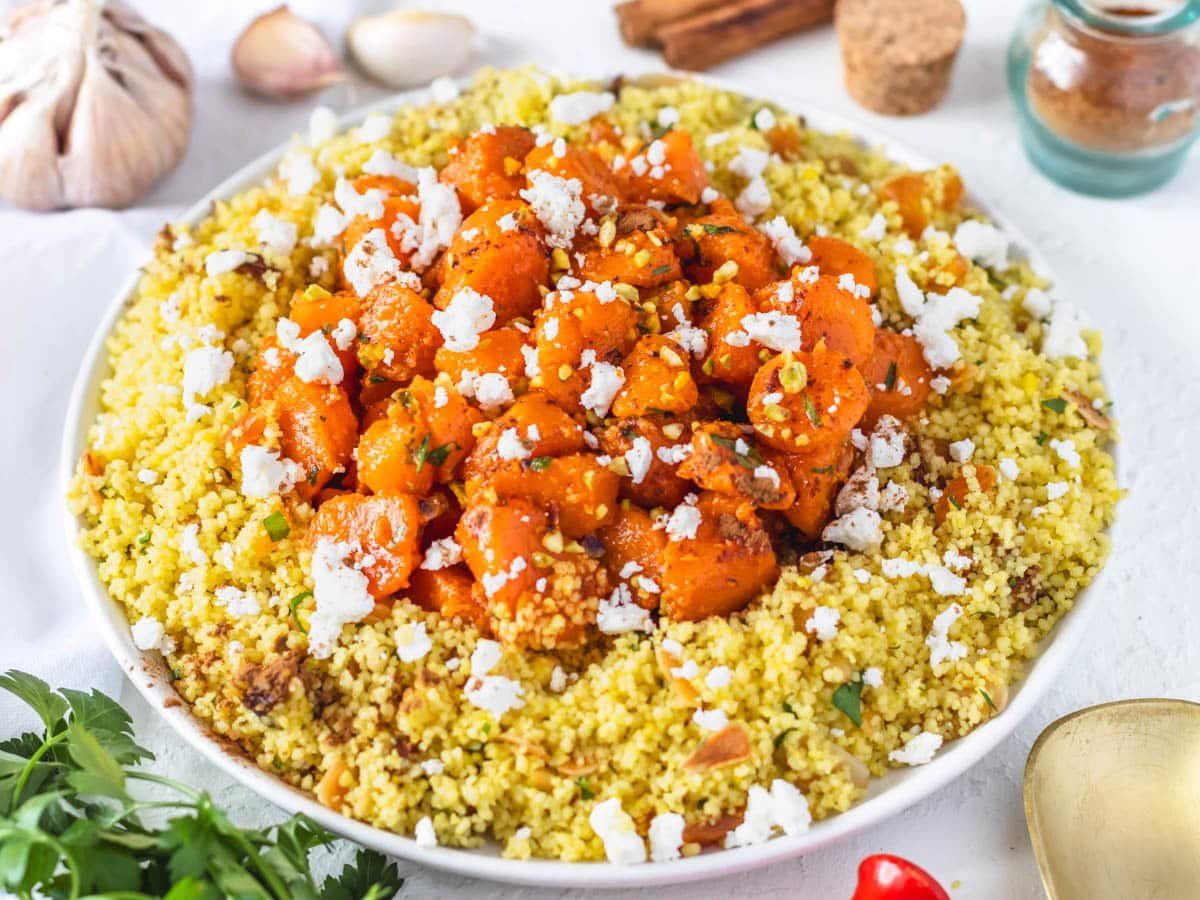
Questions
Couscous is made with durum wheat semolina flour. That’s the same ingredient used to make Italian dry pasta. The semolina is rolled into tiny balls and steamed.
Most Western supermarkets sell Moroccan couscous pre-steamed and dried for convenience. You only have to rehydrate it with boiling water or vegetable broth for 10 minutes, and it’s ready to eat.
Israeli couscous is a modern industrial product developed in the 1950s by the Israeli Osem food company in response to a rice shortage in the country.
Israeli couscous is made with wheat flour and is shaped into tiny pearls. Due to its shape, it is sometimes known as pearl couscous.
Moroccan couscous is a traditional Moroccan food on the UNESCO Intangible Cultural Heritage List thanks to its unique handmade production process. Moroccan couscous is made of semolina and shaped into tiny granules.
Moroccan couscous is traditionally piled on a plate and topped with meat, fish, or vegetable stews and served with fresh herbs, nuts, and dried fruit.
Storage & Make Ahead
Make Ahead: Moroccan couscous is an excellent recipe for meal prep as it stores well for days.
Refrigerator: keep leftovers in the fridge in an airtight container for 4 days.
Freezer: we don’t recommend freezing it.
Reheat: you can serve it refrigerated, at room temperature, or warm it in a microwave for 1 minute.
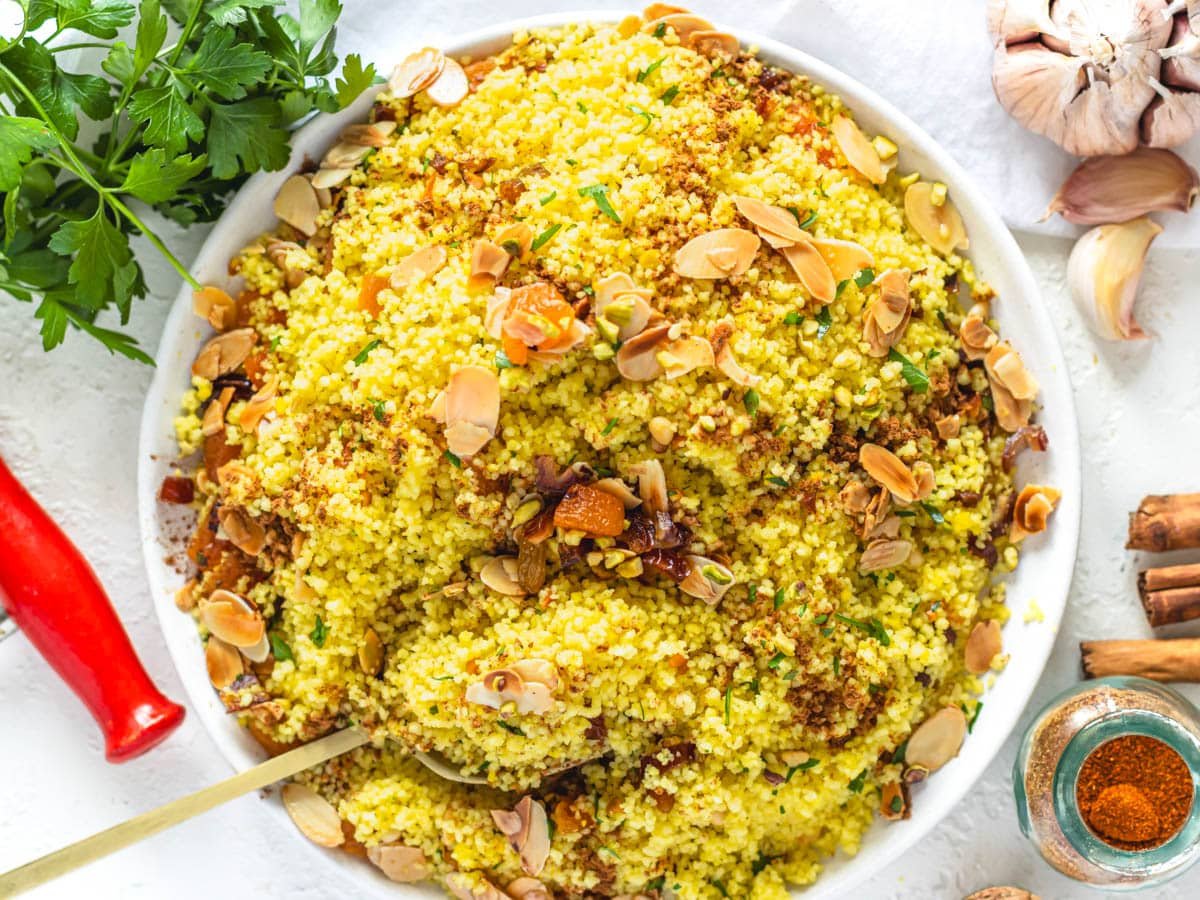
More Moroccan-inspired recipes
Get more aromatic and delicious meal inspiration with these vibrant dishes:
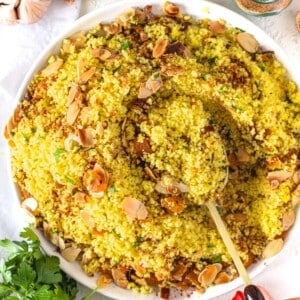
Moroccan Couscous
Ingredients
For the couscous
- 2 cups couscous
- 2 cups water boiling, or vegetable broth
- 1 teaspoon salt
- 2 pinches saffron or turmeric (optional, for color)
- 2 tablespoons extra virgin olive oil
- 2 tablespoons flat-leaf parsley or cilantro
For the dried fruit & nuts mix
- 1½ tablespoon extra virgin olive oil
- 4 tablespoons slivered almonds
- 2 tablespoons shelled pistachios chopped
- 1 tablespoons pinenuts
- 1 cup pitted dates chopped
- ¾ cup dried apricots chopped
- 2 tablespoons raisins
- 1 teaspoon cinnamon + more to garnish
- ½ teaspoon cumin
Instructions
Prepare the couscous
- Boil 2 cups water or broth.Add 1 teaspoon salt and 2 pinches saffron (or turmeric) to a large mixing bowl and dissolve them with 2 tablespoons of boiling water.
- Add 2 cups couscous and pour in the remaining boiling water.Stir and set aside for 10 minutes.
- Rake the couscous with a fork to separate its grains and fluff it up.
- Stir in 2 tablespoons flat-leaf parsley and 2 tablespoons extra virgin olive oil.
Make the dried fruit and nut mix
- Heat 1½ tablespoon extra virgin olive oil in a skillet. Add 4 tablespoons slivered almonds and toast them for 2 minutes.Add 2 tablespoons shelled pistachios, ¾ cup dried apricots, 1 cup pitted dates (all chopped), 1 tablespoons pinenuts, 2 tablespoons raisins, 1 teaspoon cinnamon, and ½ teaspoon cumin, and toast for 2 more minutes.
- Set 3 tablespoons of the mix aside. Add the rest to the bowl with the couscous and toss until well combined.
- Pile couscous on a plate and sprinkle with a few pinches of cinnamon. This is usually done in stripes, as shown in the picture below.Top with the reserved fruits and nuts mix and serve in the center of the table.
- For more serving ideas check out our serving suggestions chapter.
Video
Notes
- Substitutions
- Serving suggestions
- Variations
- Questions
- More Moroccan-inspired recipes
- Similar recipes
Nutrition
If you liked this Moroccan couscous, you might also enjoy:

Hi! We are Nico & Louise
We’re here to share delicious, easy, and healthy plant-based recipes (vegetarian & vegan) 🌿✨.
Welcome to our blog, we are glad you are here.

